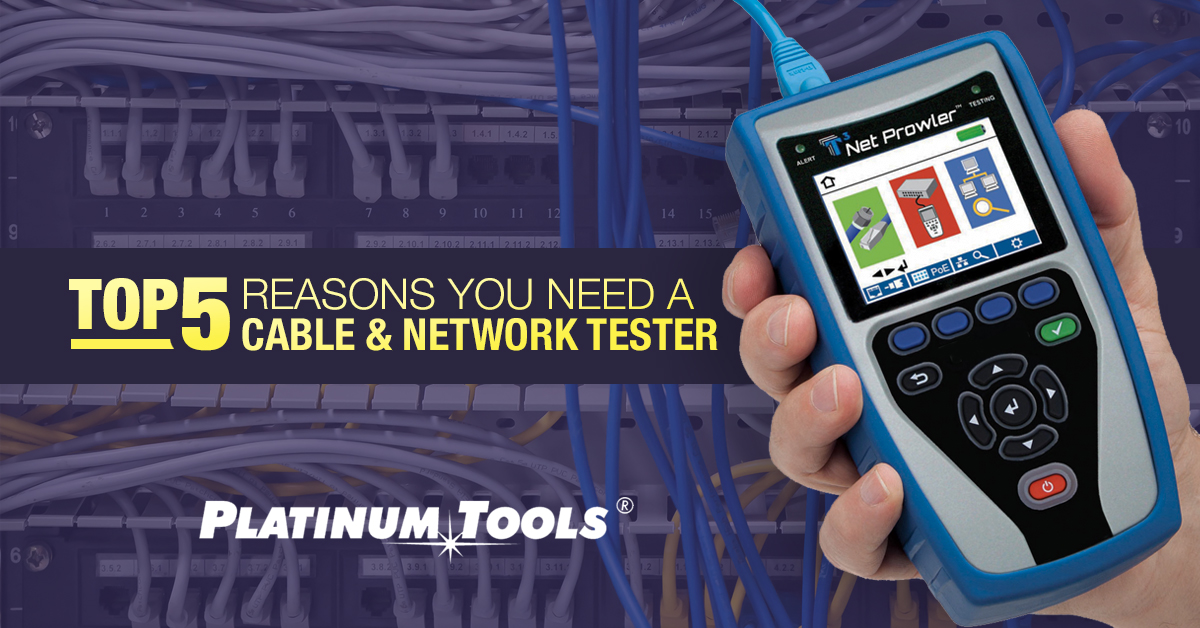
Network troubleshooting can be like untangling a big ball of string: awkward and time consuming. At the end of each string can be essential resources from servers and storage devices, access points and security devices to desktop computing resources, printers, telepresence equipment and IP telephones. Each layer, from the physical to application layers can be part of the tangle. A methodology or flowchart process is essential for a complete and definitive resolution.
A tool which supports methodical diagnosis and quickly tests each potential trouble source lets you solve your network puzzles routinely and quickly. For every question you have about the network’s condition, you get a quick answer. Additionally, a tool which helps you solve diverse network problems is also great for initial verification of cabling and network equipment.
Wield the Network Tester and Beat the Tangle
The network tester is that tool — it’s a combination of voltmeter, TDR, protocol analyzer, and more, combined with software to interpret and analyze results. When you know how to use a network tester effectively, you’re the one to call when network problems are causing headaches and need quick, effective action. Five reasons that it really is that good:
- RJ45 Test — making sure the physical layer is solid. This may be a first test if there’s a reason to suspect the cabling: if it’s new, or there has been construction nearby or other disruption.
- Pinout
- Continuity
- Length
- Unlabeled Cable Hunting — a very common problem, unfortunately. Office and equipment additions often result in a hunt to find “the other end” of existing jacks. Without a network tester, this can result in pulling additional cable to save time.
- ID remotes
- Link light
- Tone generation
- LAN Port Testing — if the local equipment is defective, you could waste time hunting a network problem that’s really right in front of you. To isolate the problem, checking the link and making sure the speed is up to par can help ensure that you have a good, active port.
- Active link light
- Speed
- Port Discovery — device and network identification. See what’s on the network, including virtual networks. Use Cisco and generic identification protocols, and identify potential troublemakers, configuration issues, and PoE problems.
- Link capability
- Power Over Ethernet with load test
- CDP (Cisco)
- LLDP
- VLAN
- Network Function Testing — testing from the user/device perspective. Instead of putting a call in to have admins check their services, you can identify any problems with automatic IP address allocation that might affect new devices, check the response of devices already on the network using IPv4 or IPv6, check URL response of web servers, and locate unlisted and unexpected devices on the network.
- DHCP
- DNS
- Ping
- IPv4/v6 & URLs
- Scan to discover or verify devices IP’s, MAC and SSID
Don’t Fall Behind
When selecting a network tester, one of the key criteria is how up-to-date the manufacturer keeps the device and its firmware. For instance, you want to be able to test the latest speeds and protocols. The Net Prowler is a powerful unit that can be given to techs for their everyday toolkit.
Be Prepared, Look Good!
A smoothly running network is the product of active monitoring and quick response when problems arise. Network testers give techs the ability to work through troubleshooting flowcharts quickly and decisively, not only ensuring that network service downtime is minimized, but showing the value of a well-prepared network management department.








